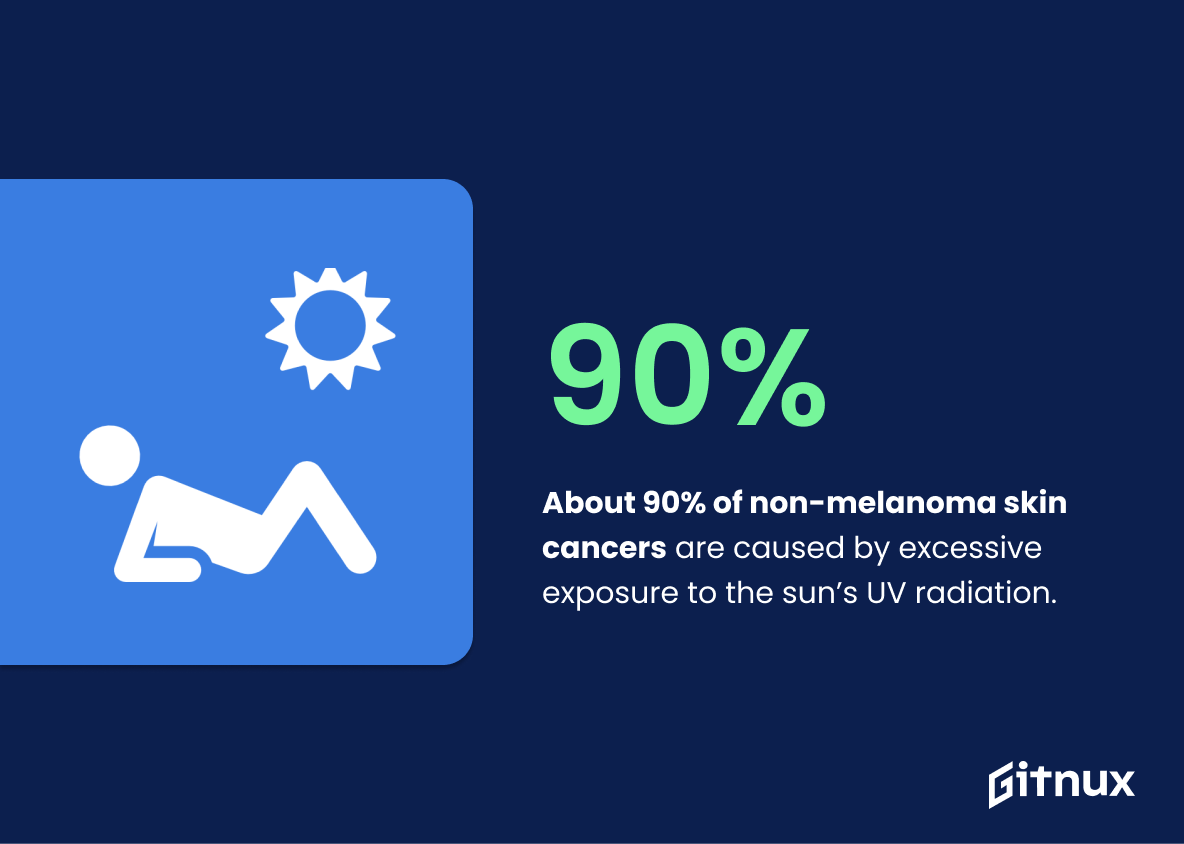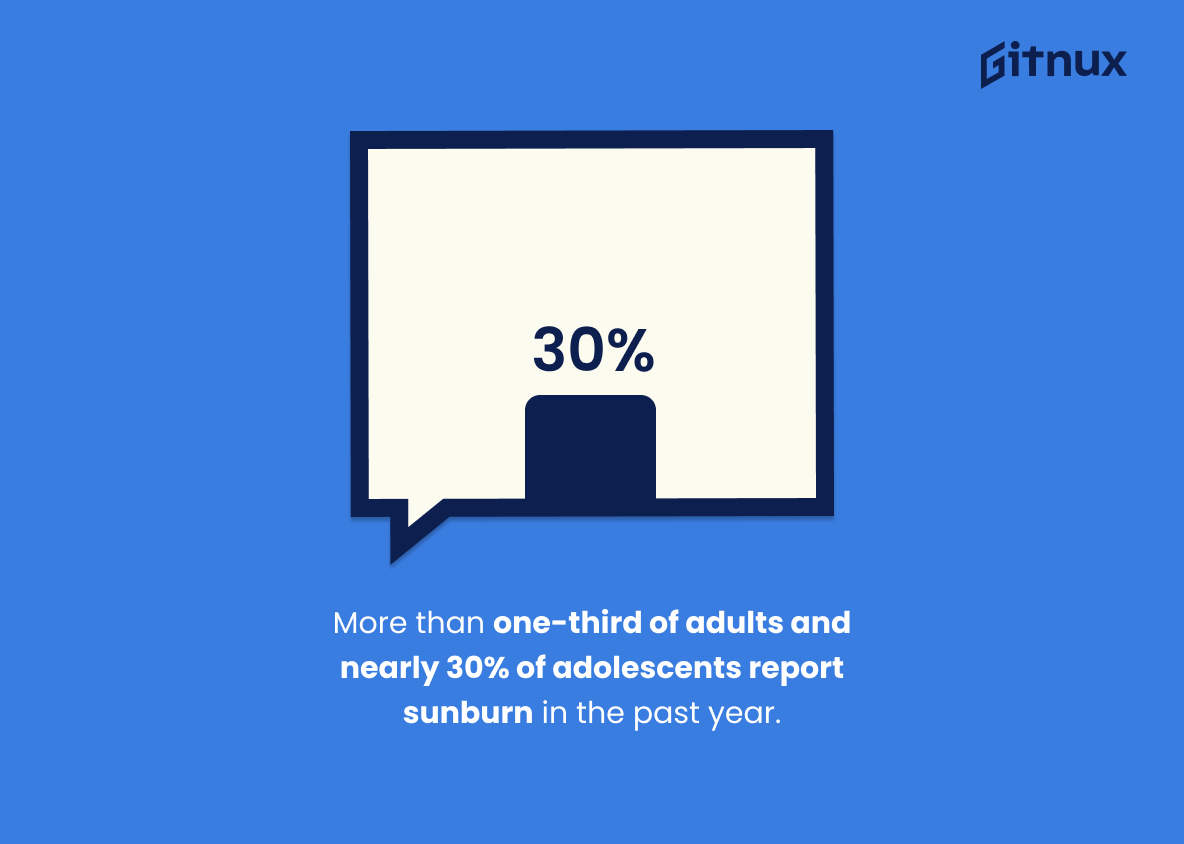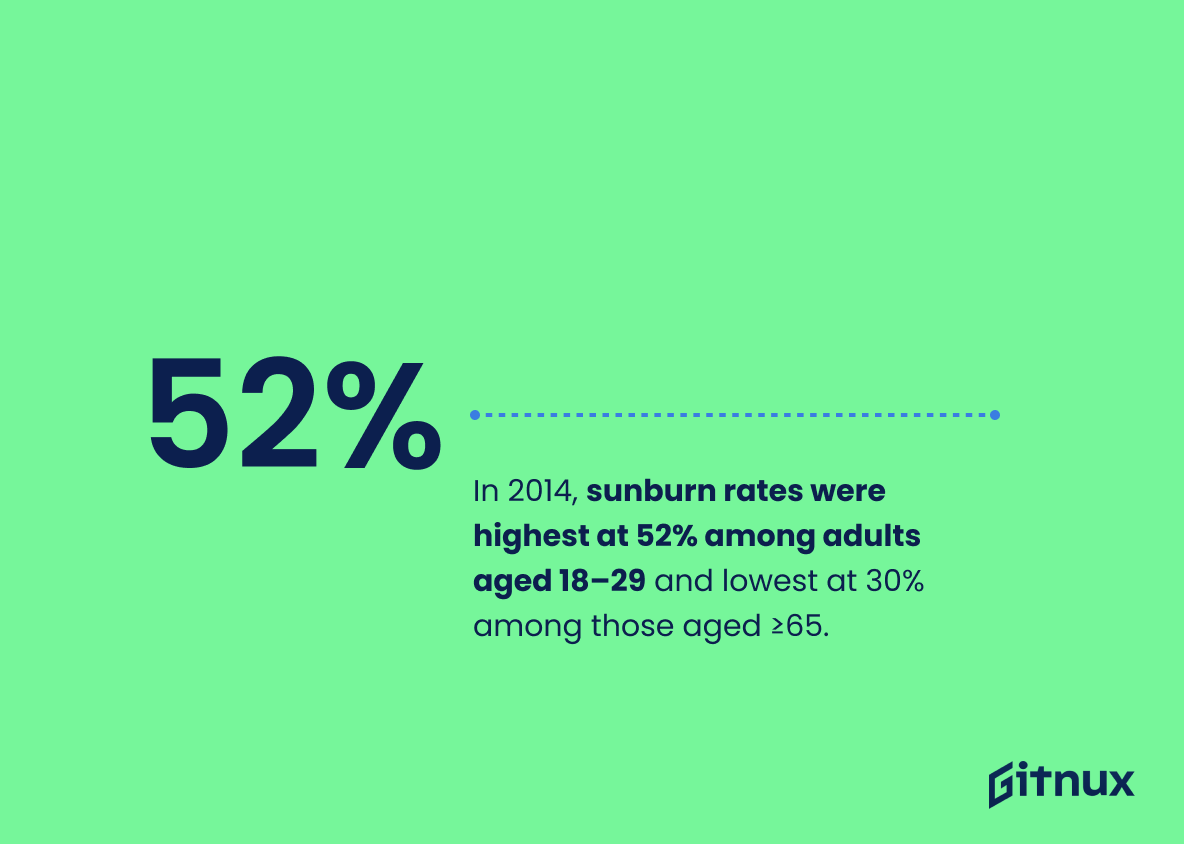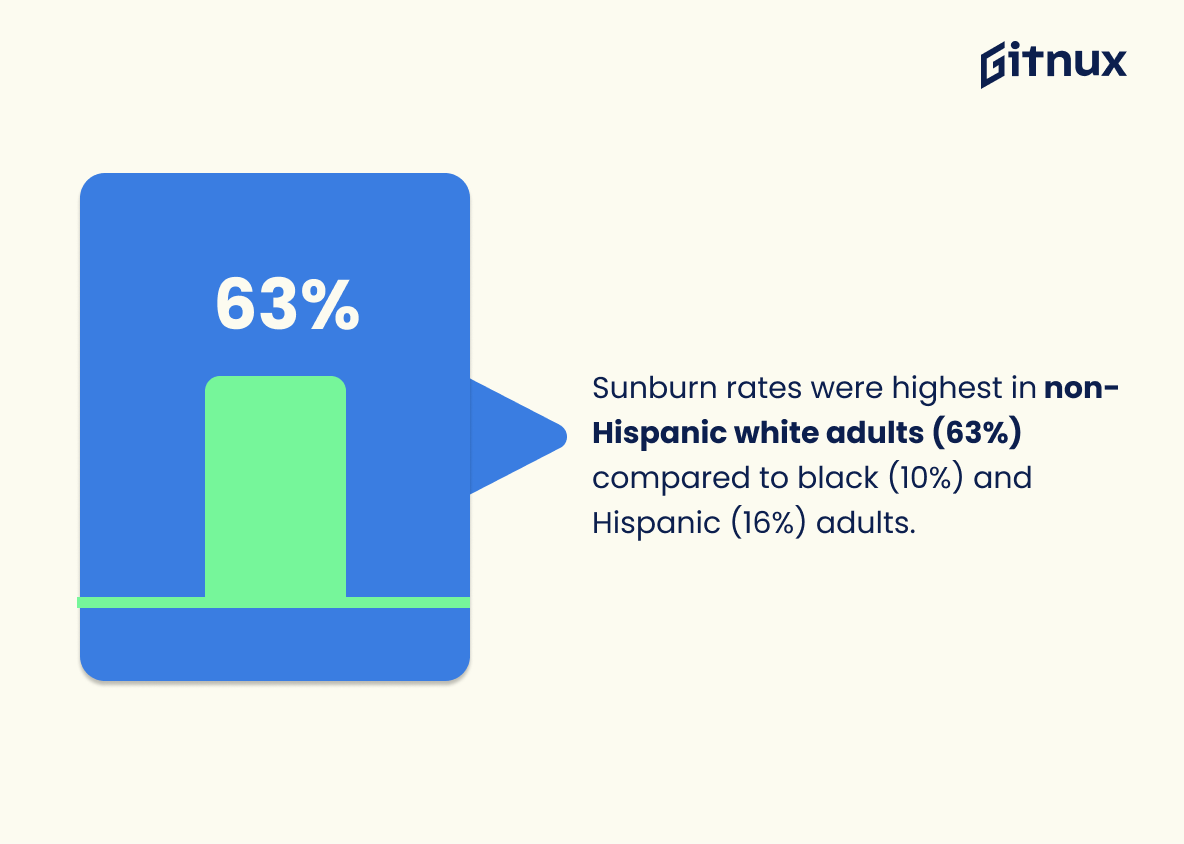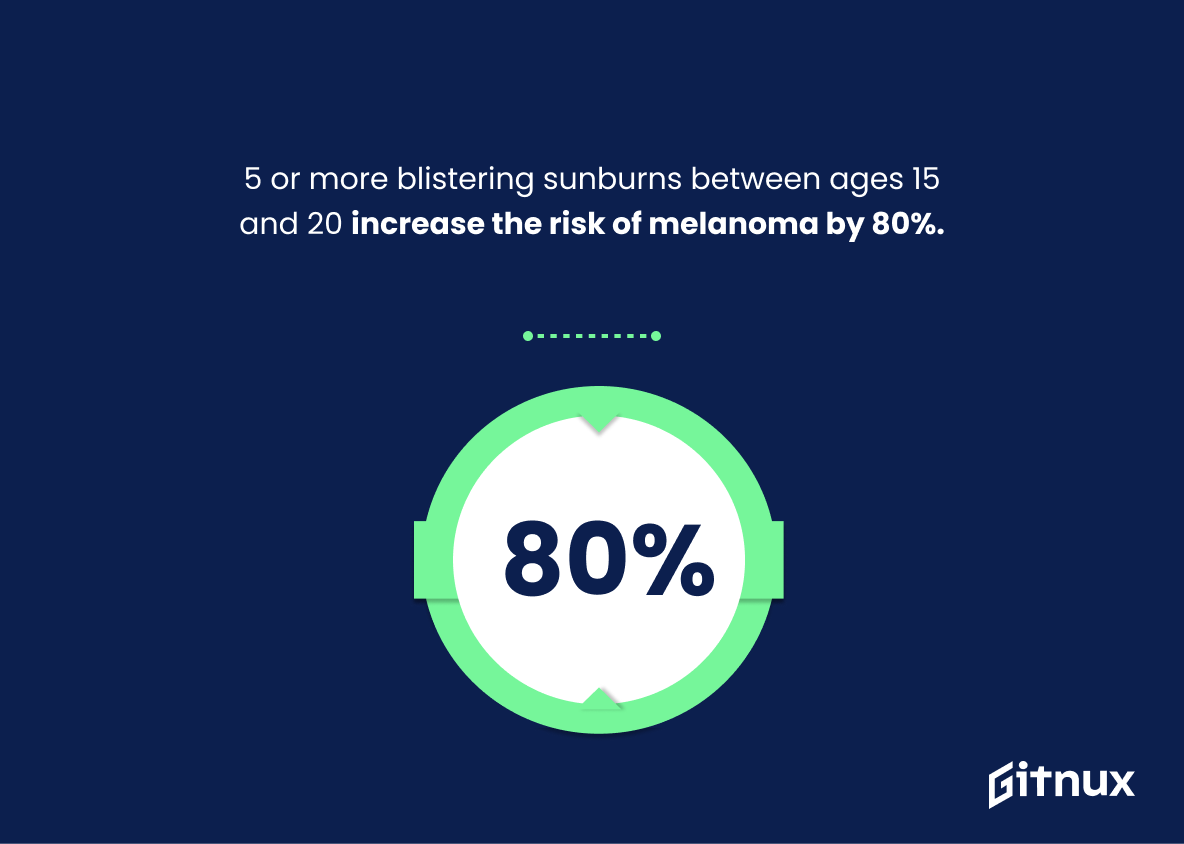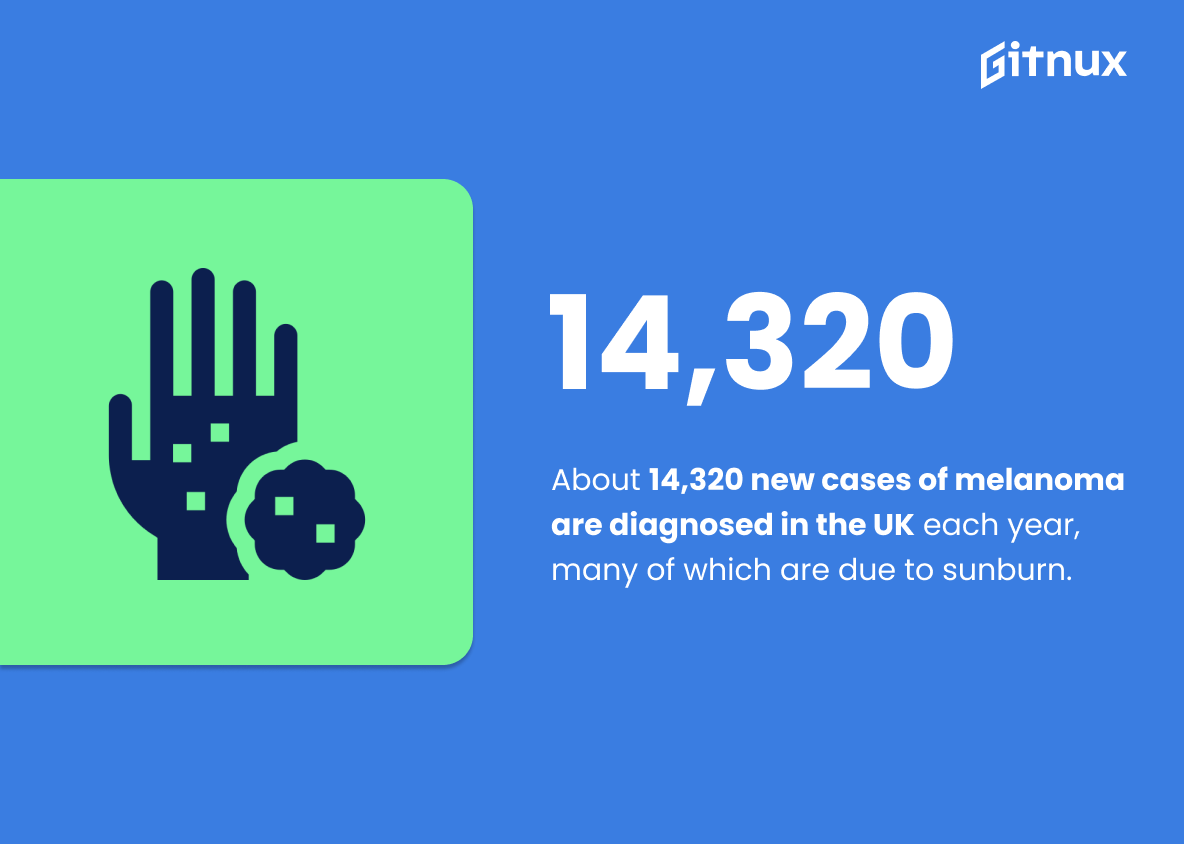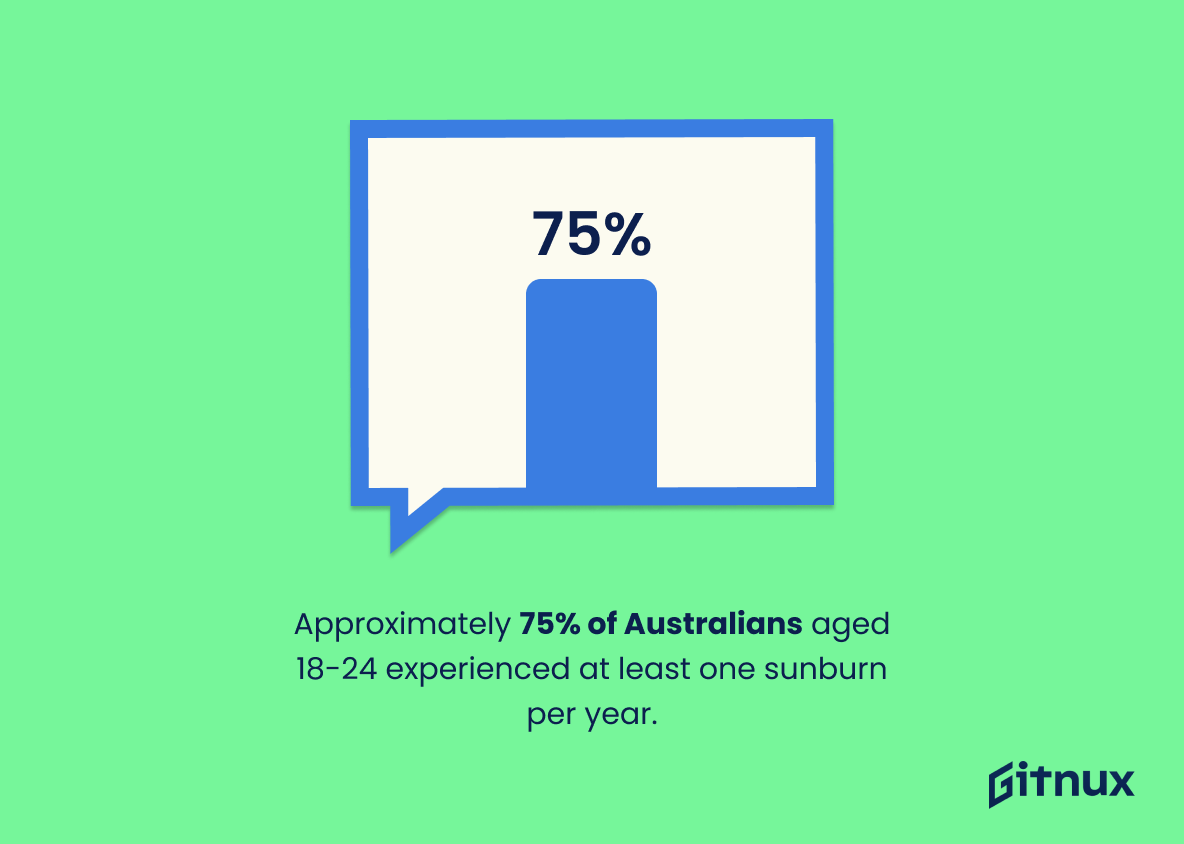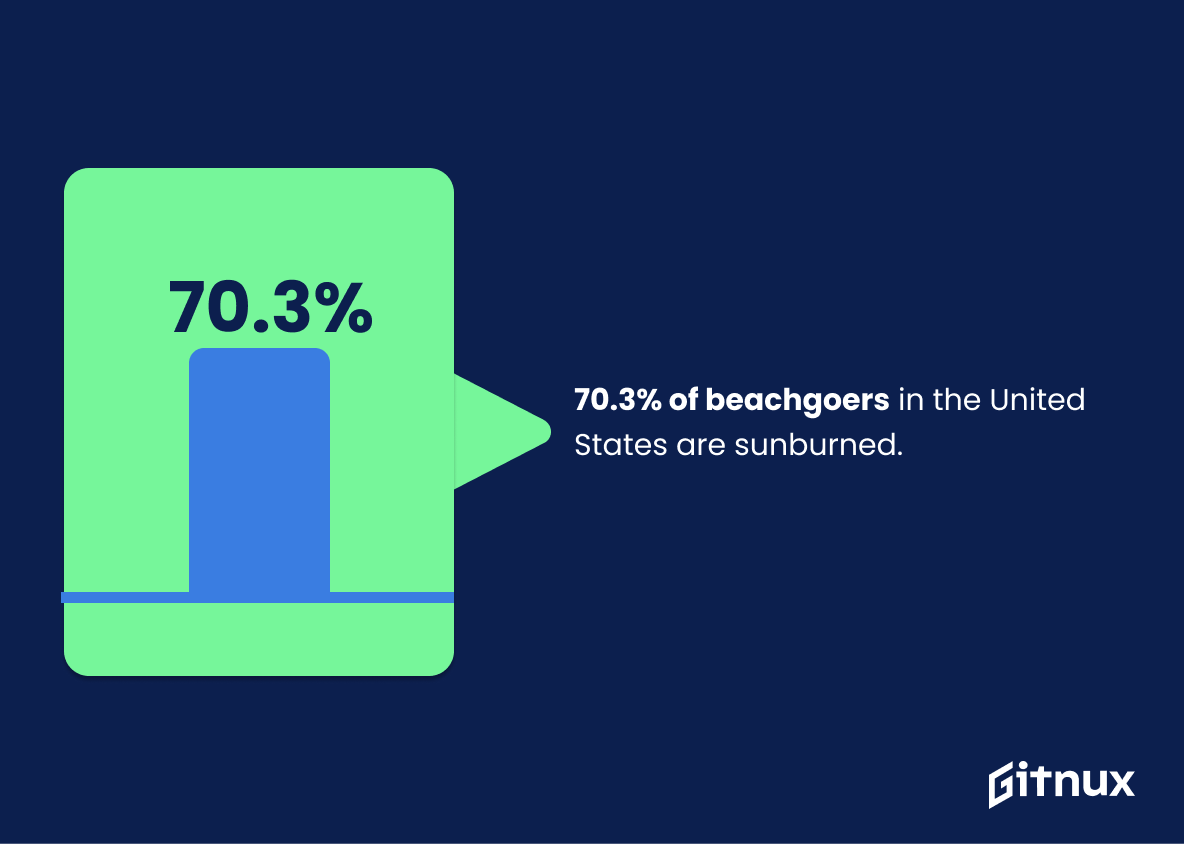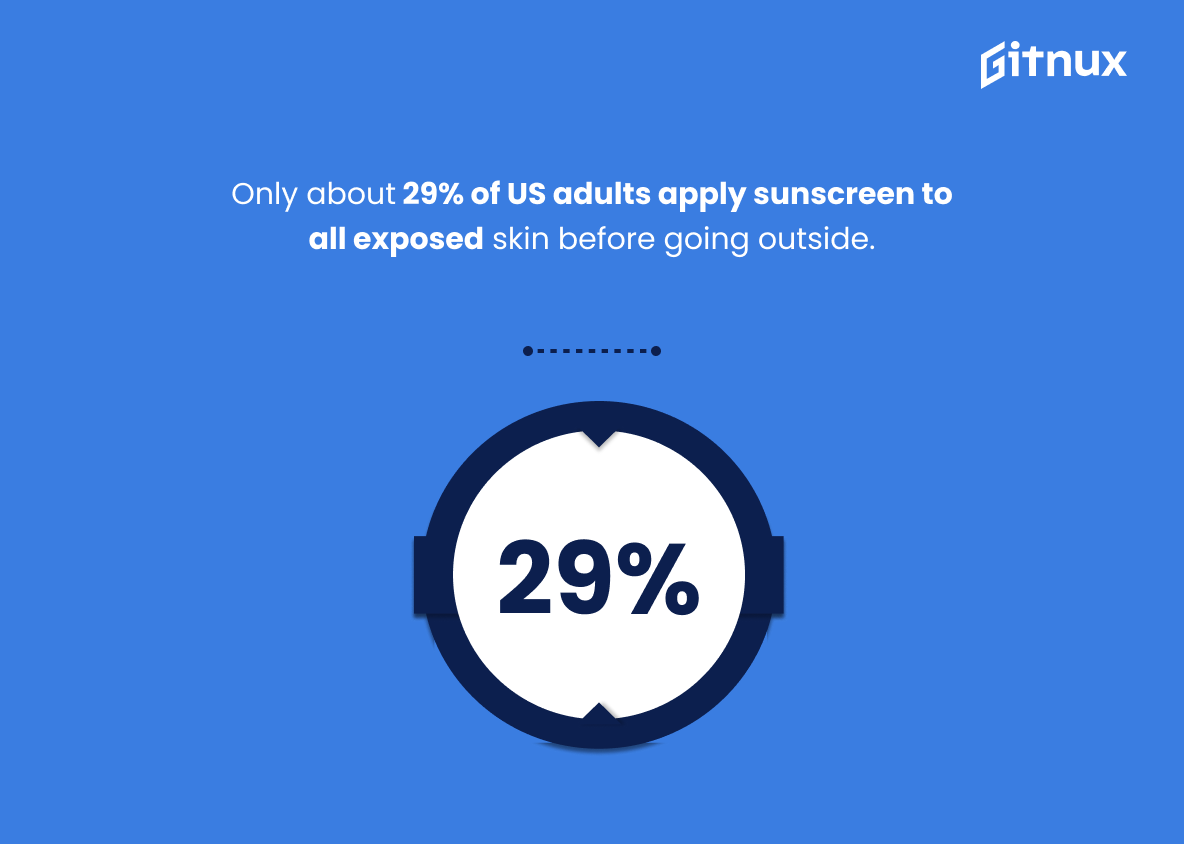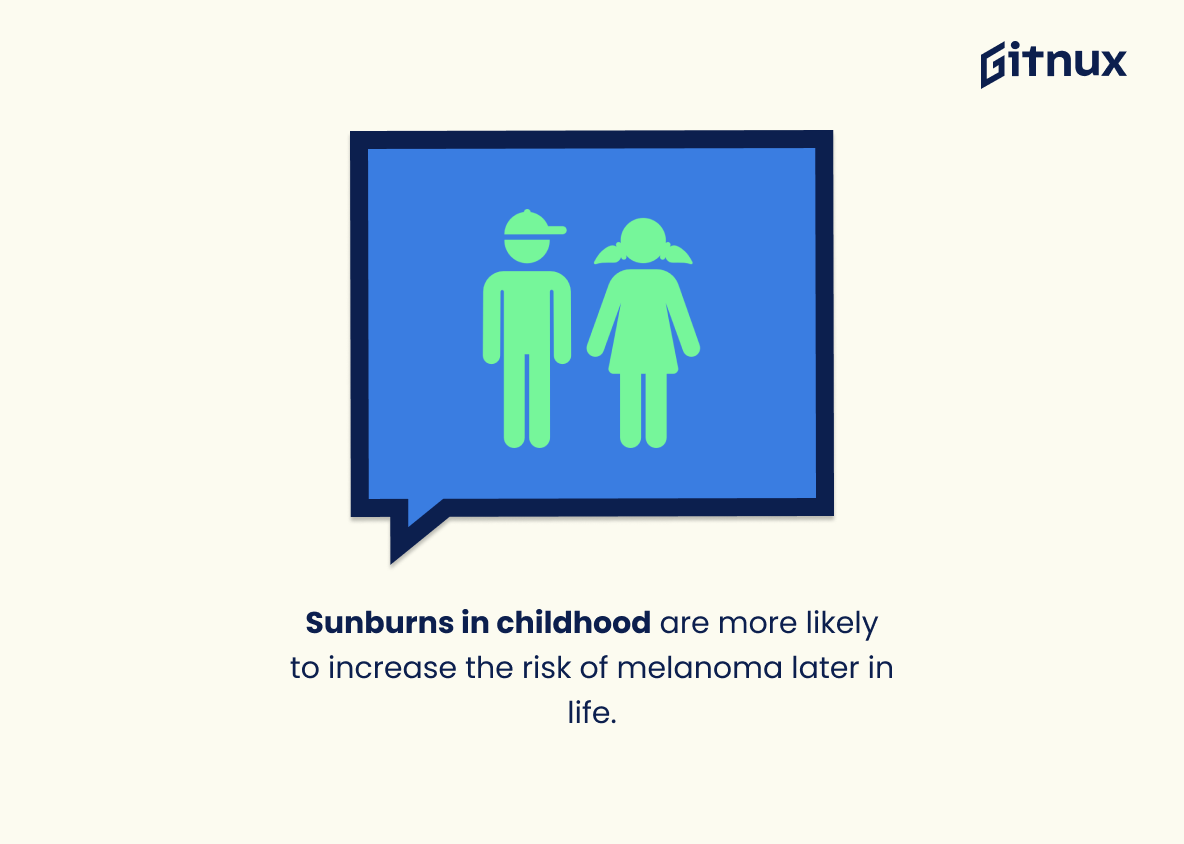Sunburns are a serious health concern, with statistics showing that they can lead to skin cancer and other long-term effects. Approximately 42% of US adults report getting sunburned each year, while more than one-third of adults and nearly 30% of adolescents also experience sunburn in the past year. Sun exposure causes 90% of premature skin aging such as wrinkles and age spots resulting from sunburn. In addition, about 90% of non-melanoma skin cancers are caused by excessive exposure to the sun’s UV radiation.
Moreover, regular daily use of sunscreen with SPF 15 or higher reduces the risk melanoma by 50%, yet only 29 percent apply it before going outside according to research conducted in 2017. The cost for treating these cases is estimated at $8 billion annually in America alone; this number increases when taking into account countries like Australia where 75 percent aged 18–24 experienced at least one burn per year or Britain which sees 14 thousand new cases yearly due to overexposure from sunlight rays . Furthermore, people who have had history with burns double their chances developing melanoma later on life compared those without any prior experiences making prevention even more important especially during childhood years since 5 blistering burns between ages 15 – 20 increase 80 % chance having malignant tumors develop over time .
These facts demonstrate how crucial it is for individuals take precautionary measures against harmful ultraviolet (UV) rays emitted through direct contact sunshine , including wearing protective clothing covering exposed areas body along using broad spectrum sunscreen lotion regularly throughout day regardless weather conditions . Taking necessary steps prevent future damage will help reduce amount money spent medical treatments associated illnesses related prolonged periods unprotected outdoor activities well improve overall quality life everyone involved .
This statistic is a stark reminder of the importance of taking proper precautions when exposed to the sun. It highlights the prevalence of sunburns among US adults, and serves as a warning to those who may not be taking the necessary steps to protect their skin.
Sunburn can occur within 15 minutes of being exposed to the sun’s UV rays.
This statistic is a stark reminder of how quickly sunburn can set in, emphasizing the importance of taking the necessary precautions to protect oneself from the sun’s UV rays. It serves as a warning to those who may be unaware of the dangers of overexposure to the sun, and highlights the need for individuals to be mindful of their time spent in the sun.
Sunburn Statistics Overview
About 90% of non-melanoma skin cancers are caused by excessive exposure to the sun’s UV radiation.
This statistic is a stark reminder of the dangers of overexposure to the sun’s UV radiation. It serves as a warning to those who may be unaware of the risks associated with sunburn, and highlights the importance of taking the necessary precautions to protect oneself from the sun’s harmful rays.
More than one-third of adults and nearly 30% of adolescents report sunburn in the past year.
This statistic is a stark reminder of the prevalence of sunburn in our society. It is a clear indication that more needs to be done to educate people on the importance of sun protection and the dangers of sunburn. It is a call to action for individuals to take the necessary steps to protect themselves from the sun’s harmful rays.
In 2014, the prevalence of sunburn among US adults was highest among those aged 18–29 years (52%) and lowest among those aged ≥65 years (30%).
This statistic is a stark reminder of the importance of sun protection, particularly among young adults. It highlights the need for increased education and awareness about the dangers of sunburn, as well as the need for better access to sun protection products and services. Sunburn can lead to serious health complications, so it is essential that we take steps to reduce the prevalence of sunburn among all age groups.
Sunburn rates were highest in non-Hispanic white adults (63%) compared to black (10%) and Hispanic (16%) adults.
This statistic is a stark reminder of the disproportionate impact of sunburn on non-Hispanic white adults. It highlights the need for greater awareness and education about the dangers of sunburn, particularly among non-Hispanic white adults, in order to reduce the risk of skin cancer and other health issues associated with sunburn.
5 or more blistering sunburns between ages 15 and 20 increase the risk of melanoma by 80%.
This statistic is a stark reminder of the importance of protecting oneself from the sun’s harmful rays. It highlights the fact that even a few sunburns during the teenage years can have a significant impact on one’s risk of developing melanoma later in life. This is a powerful message that should not be taken lightly, and serves as a reminder to take the necessary precautions to protect oneself from the sun.
About 14,320 new cases of melanoma are diagnosed in the UK each year, many of which are due to sunburn.
This statistic is a stark reminder of the dangers of sunburn and the importance of taking proper precautions when exposed to the sun. It highlights the fact that sunburn can have serious consequences, and that it is not something to be taken lightly. It also serves as a warning to those who may be unaware of the risks associated with sunburn, and encourages them to take the necessary steps to protect themselves.
Approximately 75% of Australians aged 18-24 experienced at least one sunburn per year.
This statistic is a stark reminder of the importance of sun protection, particularly among young Australians. It highlights the need for increased awareness of the dangers of sunburn and the importance of taking preventative measures to protect oneself from the sun’s harmful rays. It also serves as a warning to those who may be unaware of the risks associated with sunburn and the potential long-term damage it can cause.
Sun exposure causes 90% of premature skin aging, such as wrinkles and age spots, resulting from sunburn.
This statistic is a powerful reminder of the importance of protecting our skin from the sun’s harmful rays. It highlights the fact that sunburn can have a significant impact on our skin’s health and appearance, and that taking the necessary precautions to avoid sunburn is essential for maintaining healthy, youthful skin.
70.3% of beachgoers in the United States are sunburned.
This statistic is a stark reminder of the importance of taking proper precautions when spending time in the sun. It highlights the prevalence of sunburns among beachgoers in the United States, and serves as a warning to those who may not be taking the necessary steps to protect their skin. This statistic is a powerful reminder that sunburns are a serious issue and should not be taken lightly.
Only about 29% of US adults apply sunscreen to all exposed skin before going outside.
This statistic is a stark reminder of the importance of protecting our skin from the sun’s harmful rays. With only 29% of US adults taking the necessary precautions to apply sunscreen to all exposed skin before going outside, it is clear that many people are not taking the necessary steps to protect themselves from sunburns. This statistic serves as a call to action for people to be more mindful of their skin health and to take the necessary steps to protect themselves from the sun.
People who have a history of sunburns are twice as likely to develop melanoma as those who have not had sunburns.
This statistic is a powerful reminder of the importance of protecting oneself from the sun’s harmful rays. It highlights the fact that sunburns can have serious long-term consequences, and that taking the necessary precautions to avoid them is essential. It is a stark warning that should not be ignored, and serves as a reminder of the importance of taking the necessary steps to protect oneself from the sun.
Sunburns in childhood are more likely to increase the risk of melanoma later in life.
This statistic is a stark reminder of the importance of protecting our skin from the sun’s harmful rays. Sunburns in childhood can have long-term consequences, increasing the risk of melanoma later in life. This is why it is so important to take the necessary precautions to protect ourselves and our children from the sun.
Conclusion
The statistics presented in this blog post demonstrate the serious risks associated with sunburns. Sunburn can occur within 15 minutes of being exposed to UV rays, and approximately 42% of US adults report getting sunburned each year. Furthermore, about 90% of non-melanoma skin cancers are caused by excessive exposure to the sun’s UV radiation, while more than one-third of adults and nearly 30% of adolescents report having experienced a sunburn in the past year. Additionally, regular daily use sunscreen with SPF 15 or higher reduces the risk for developing melanoma by 50%, yet only 29% of US adults apply it before going outside. Finally, people who have had a history of sunburns are twice as likely to develop melanoma later on in life compared those who haven’t been burned – making it clear that taking proper precautions against overexposure is essential for protecting your health from long term damage due to ultraviolet radiation from sunlight.
References
0. – https://www.cancer.org.au
1. – https://www.businessinsider.com
2. – https://www.bad.org.uk
3. – https://www.healthline.com
4. – https://www.wcrf.org
5. – https://www.ncbi.nlm.nih.gov
6. – https://www.cdc.gov
7. – https://www.practiceupdate.com
8. – https://www.aad.org
9. – https://www.cancerresearchuk.org
